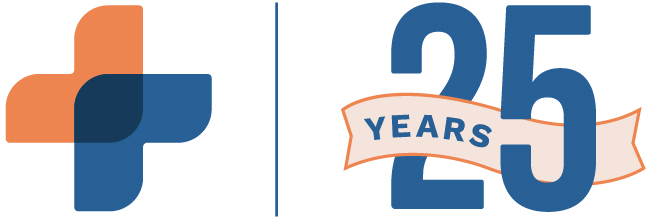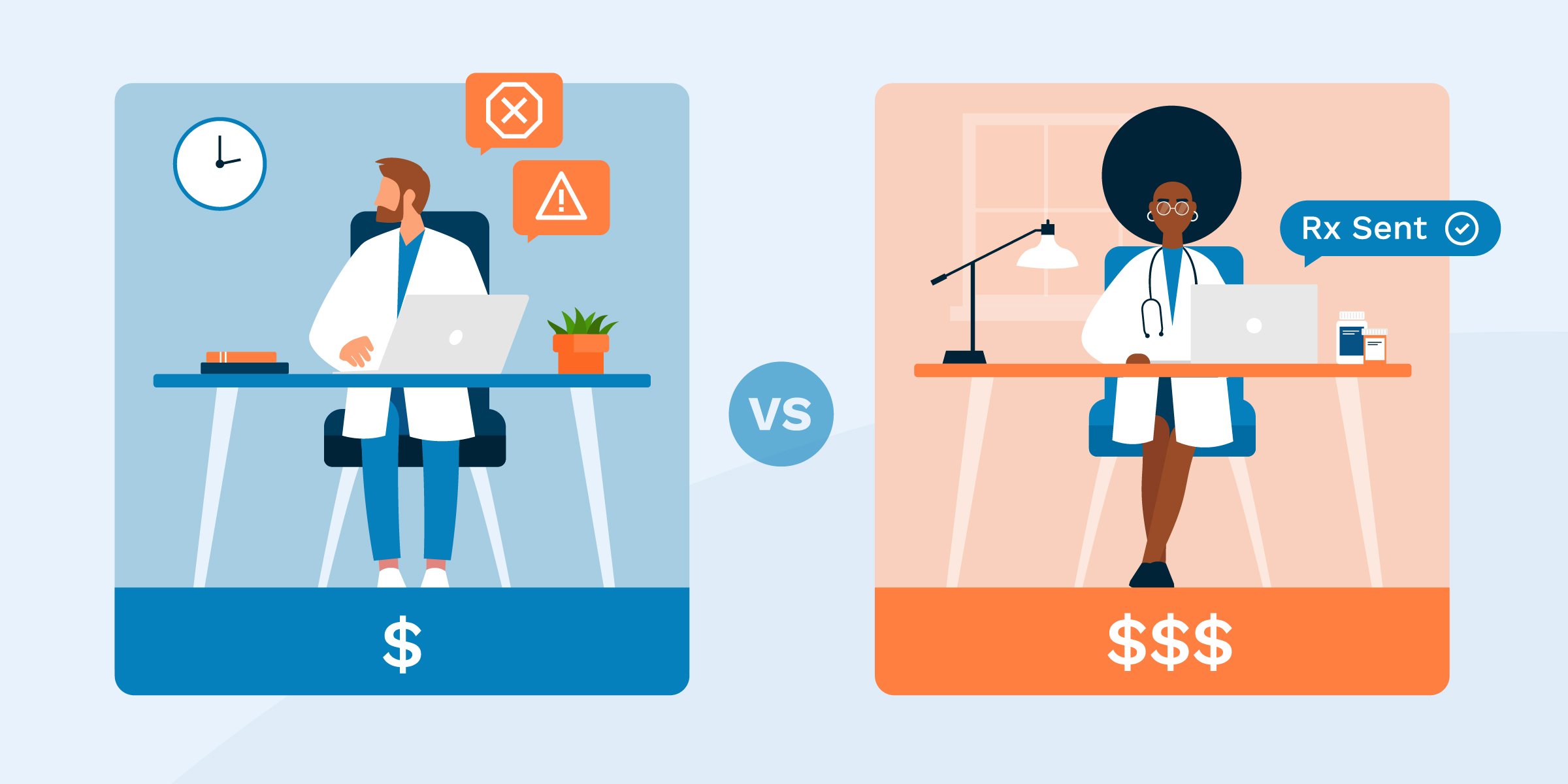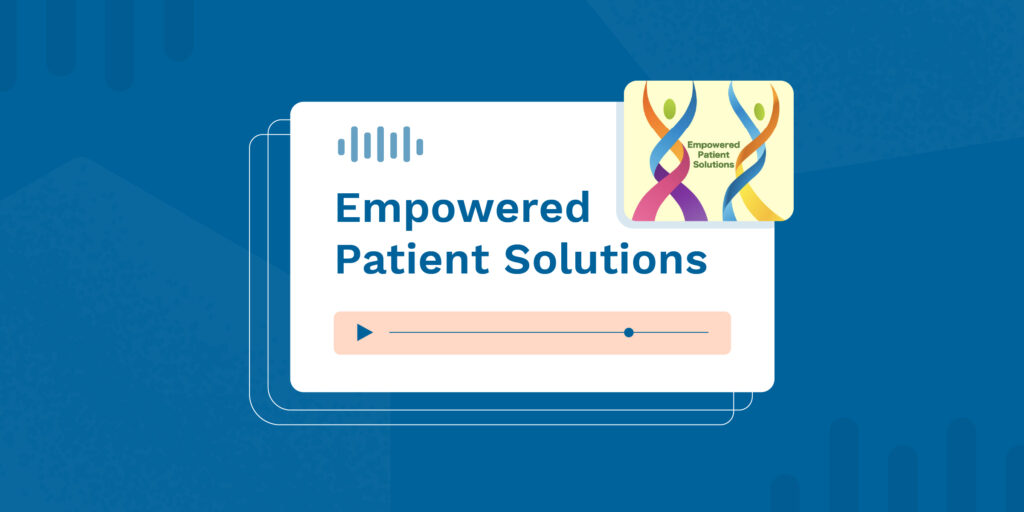Electronic prescribing software is intended to improve patient care and safety, and save practice’s time. We often receive calls from physicians using a free e-prescribing solution complaining that the software they’ve selected is actually slowing down essential prescription transmission.
While choosing affordable e-prescribing is a smart decision, it’s important to understand the distinction between ‘affordable’ and ‘free.’ Choosing the right solution for your practice is critical; the wrong one can drain financial resources, be a barrier to adoption for your physicians, nurses, and staff, and ultimately hinder your ability to provide the best patient care.
Issues with Free Online Electronic Prescription Software
The use of online prescription software is not a new concept—especially in the United States. By 2023, Electronic Prescribing for Controlled Substances (EPCS) legislation will be enforced in every US state thanks in part to the Every Prescription Conveyed Securely Act, introduced in 2018. The legislation requires that all prescriptions for controlled substances under Medicare Part D and Medicare Advantage must be transmitted electronically.
The spike in the use of electronic prescription software is largely due to the nation’s efforts to end the opioid epidemic and encourage patient safety; in 2021 alone, more than 100,000 Americans died from drug overdoses.. With more efficient ways to track and monitor prescriptions with EHR and e-prescribing software, physicians and pharmacists can better prevent drug abuse, fraudulent prescriptions, and other actions that lead to misuse of medication.
Despite government mandates and the benefits introduced by electronic prescribing, not all software systems are created equal. Many prescription software systems—especially those with usability issues and lack of safeguards—can actually increase inaccuracies and prescription errors. This can result in extra cost, workflow inefficiencies, a negative patient experience, and the potential for litigation.
For example, e-prescribing software with little functionality, poor usability, or a lack of automatic checks and safeguards may increase prescription errors and potentially damage your patients’ health. Additionally, prescription software that requires users to manually enter patient or prescription information may create workflow challenges, medication and treatment delays, workplace tension, or worse.
Choosing a free online prescription software may seem like an easy way to save money, but these systems may end up costing you more in the long run.
How to Choose the Right E-prescribing Software
When researching which e-prescribing software is right for you and your patients, it’s crucial to think beyond the initial cost (or lack thereof). Instead, began your search by asking the following questions:
- Does the vendor supplying the “free” software offer ongoing, live technical support at no cost?
- Does the vendor provide training to physicians, nurses, and staff at no cost?
- What is the cost to enroll and train any future providers on the practice’s care team?
- Does the “free” vendor provide direct PDMP/PMP integration and medication history?
- Will there be fees when new product features and enhancements are launched?
- Does the vendor offer a no-cost upload of patient demographic data into the system to reduce the need for manual data entry?
- Are mobile applications available at no cost for iOS and Android, for electronic prescribing on-the-go from anywhere?
Asking yourself these questions will help you carefully evaluate each vendor. Additionally, it can help you ensure you’re implementing high-quality software that improves the quality of patient care, streamlines workflows, and reduces errors.
Healthcare technology is an expensive industry, and a revenue stream is required for any vendor to survive in a competitive market. While your favorite “free” electronic prescribing vendor may offer their software at no cost, it’s likely that you will be expected to cover exorbitant fees for setup, support, training, data imports, and more.
Unexpected costs are just one of the major issues with free online prescription software. Poorly designed software can also drain practices of their most valuable resource—time. Time wasted on electronic prescribing software that lacks ease-of-use is not only frustrating, but it can also significantly reduce the number of patients your practice can see on a daily basis. As a result, your practice’s revenue is affected and your ability to foster positive patient-provider relationships is hampered.
The Best E-prescribing Software Isn’t Free, But it Can Be Affordable
Don’t cut corners when it comes to the health and safety of your patients. Implementing free e-prescribing software may help you reduce costs initially, but it’s not worth the risk to your patient’s health or your practice workflows and reputation. Instead, find an affordable solution that meets your needs; for example, one of the longest-standing providers of E-Prescribing software: RXNT.
In 1999, RXNT revolutionized the way prescribers wrote medications with a streamlined, affordable, cloud-based solution that is still the gold standard today. One of the cornerstones of our organization has been to listen to customer feedback and continually improve workflow and features for a better product over time. Cloud-based technology allows RXNT to push automatic updates and upgrades for all customers at no cost. Unlimited training and support is standard with any of our software and is also included at no additional cost. You can expect 24/7 cloud-based access, premium US-based in-house support, regular system upgrades, and free mobile applications.
Your practice will save time, improve workflows, and enhance patient care with our Electronic Prescribing software paired with a knowledgeable support and training team. The best part? The affordable price of our software ensures you can stick to your budget without sacrificing the quality of your patient care.





